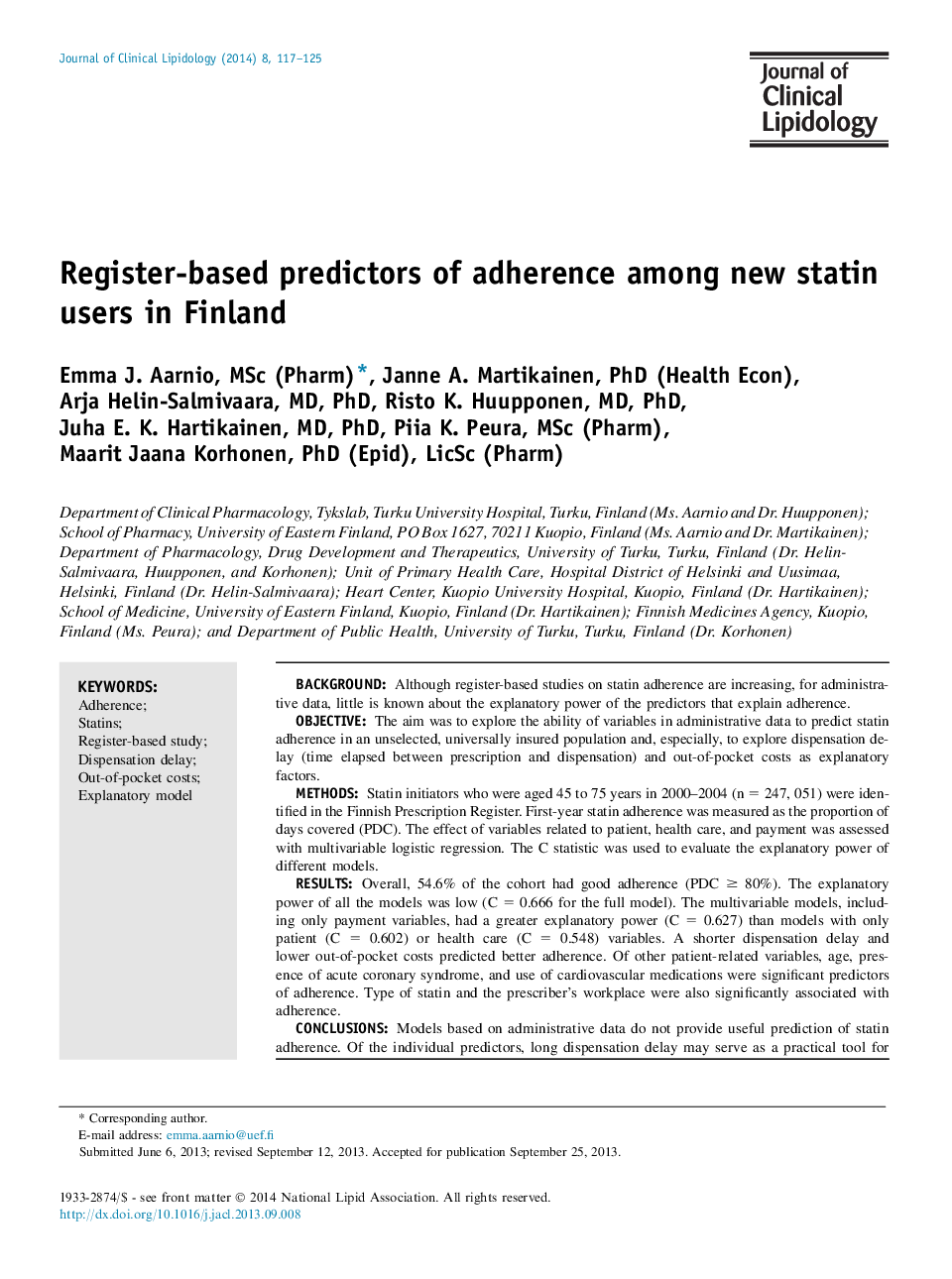| Article ID | Journal | Published Year | Pages | File Type |
|---|---|---|---|---|
| 2965855 | Journal of Clinical Lipidology | 2014 | 9 Pages |
►We studied the ability of register-based variables to predict adherence to statins.►About one-half of statin initiators have good adherence during the first treatment year.►The explanatory power of register-based variables in predicting adherence is low.►Increasing out-of-pocket statin costs decreases the likelihood of good adherence.►The delay between the first statin prescription and dispensation predicts poor adherence.
BackgroundAlthough register-based studies on statin adherence are increasing, for administrative data, little is known about the explanatory power of the predictors that explain adherence.ObjectiveThe aim was to explore the ability of variables in administrative data to predict statin adherence in an unselected, universally insured population and, especially, to explore dispensation delay (time elapsed between prescription and dispensation) and out-of-pocket costs as explanatory factors.MethodsStatin initiators who were aged 45 to 75 years in 2000–2004 (n = 247, 051) were identified in the Finnish Prescription Register. First-year statin adherence was measured as the proportion of days covered (PDC). The effect of variables related to patient, health care, and payment was assessed with multivariable logistic regression. The C statistic was used to evaluate the explanatory power of different models.ResultsOverall, 54.6% of the cohort had good adherence (PDC ≥ 80%). The explanatory power of all the models was low (C = 0.666 for the full model). The multivariable models, including only payment variables, had a greater explanatory power (C = 0.627) than models with only patient (C = 0.602) or health care (C = 0.548) variables. A shorter dispensation delay and lower out-of-pocket costs predicted better adherence. Of other patient-related variables, age, presence of acute coronary syndrome, and use of cardiovascular medications were significant predictors of adherence. Type of statin and the prescriber's workplace were also significantly associated with adherence.ConclusionsModels based on administrative data do not provide useful prediction of statin adherence. Of the individual predictors, long dispensation delay may serve as a practical tool for identifying patients at risk of poor adherence. Increases in out-of-pocket costs predict nonadherence.
